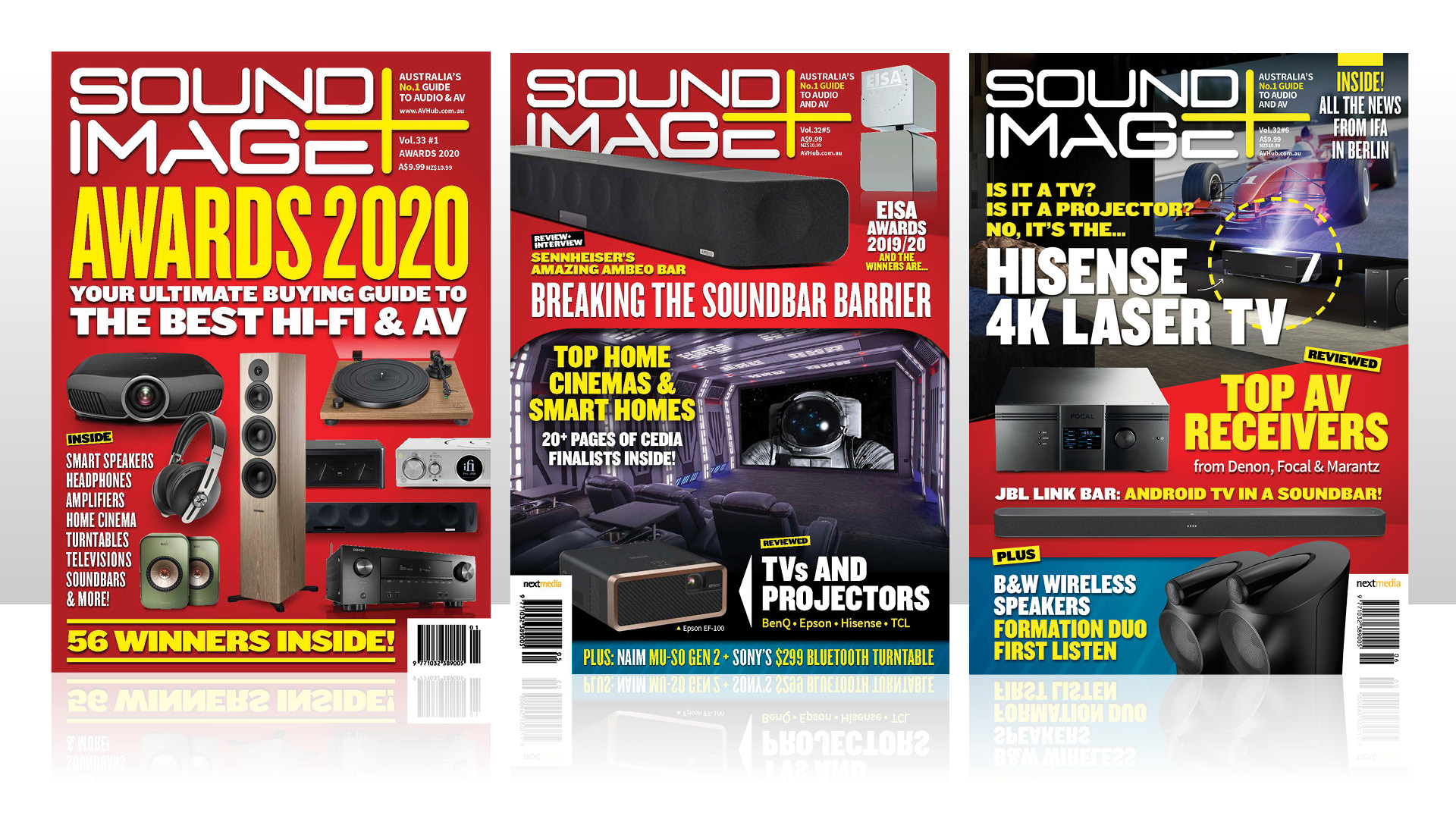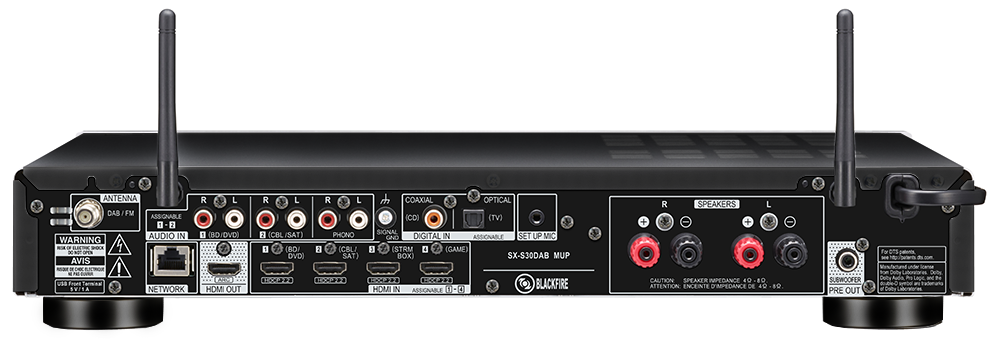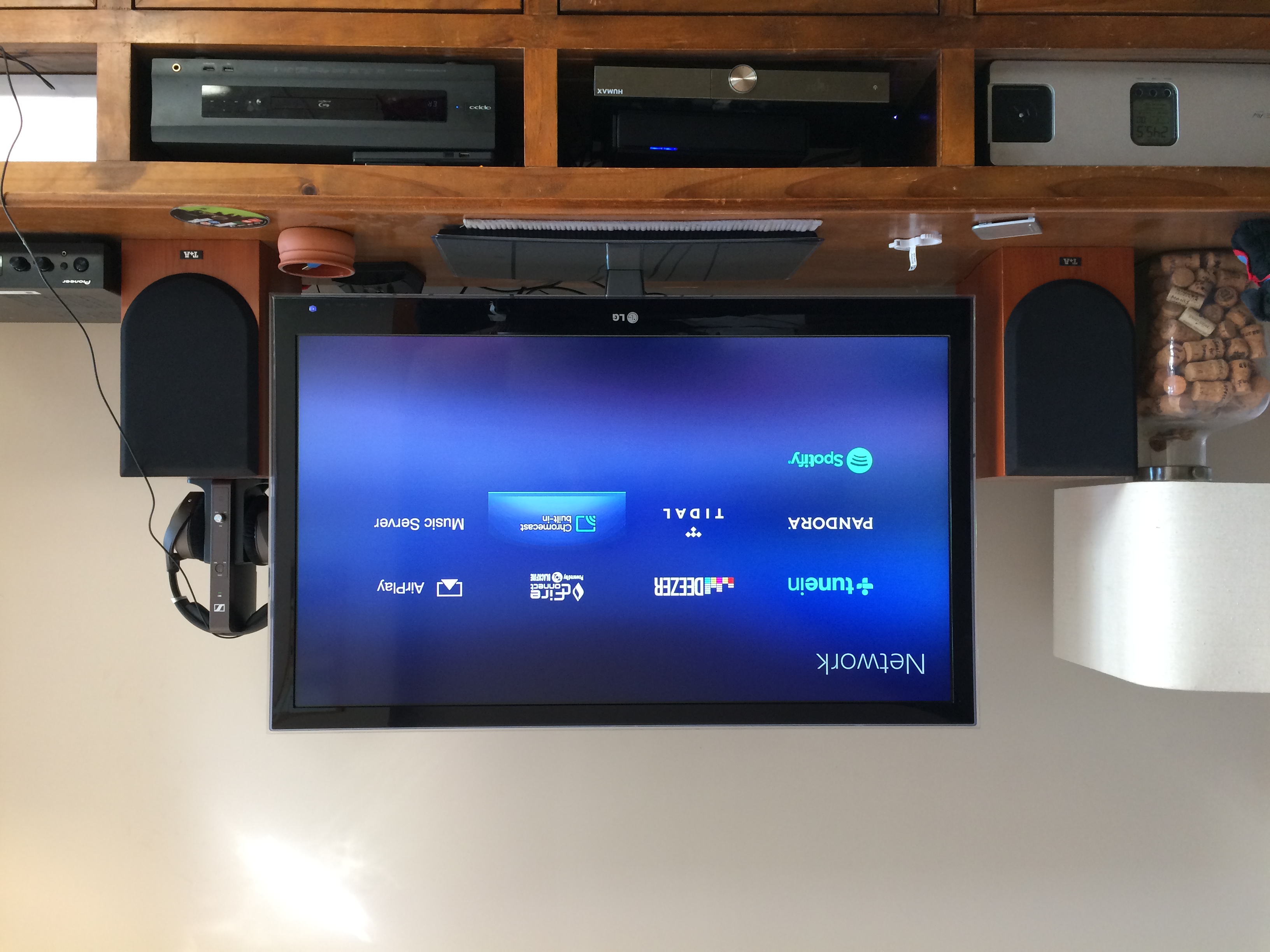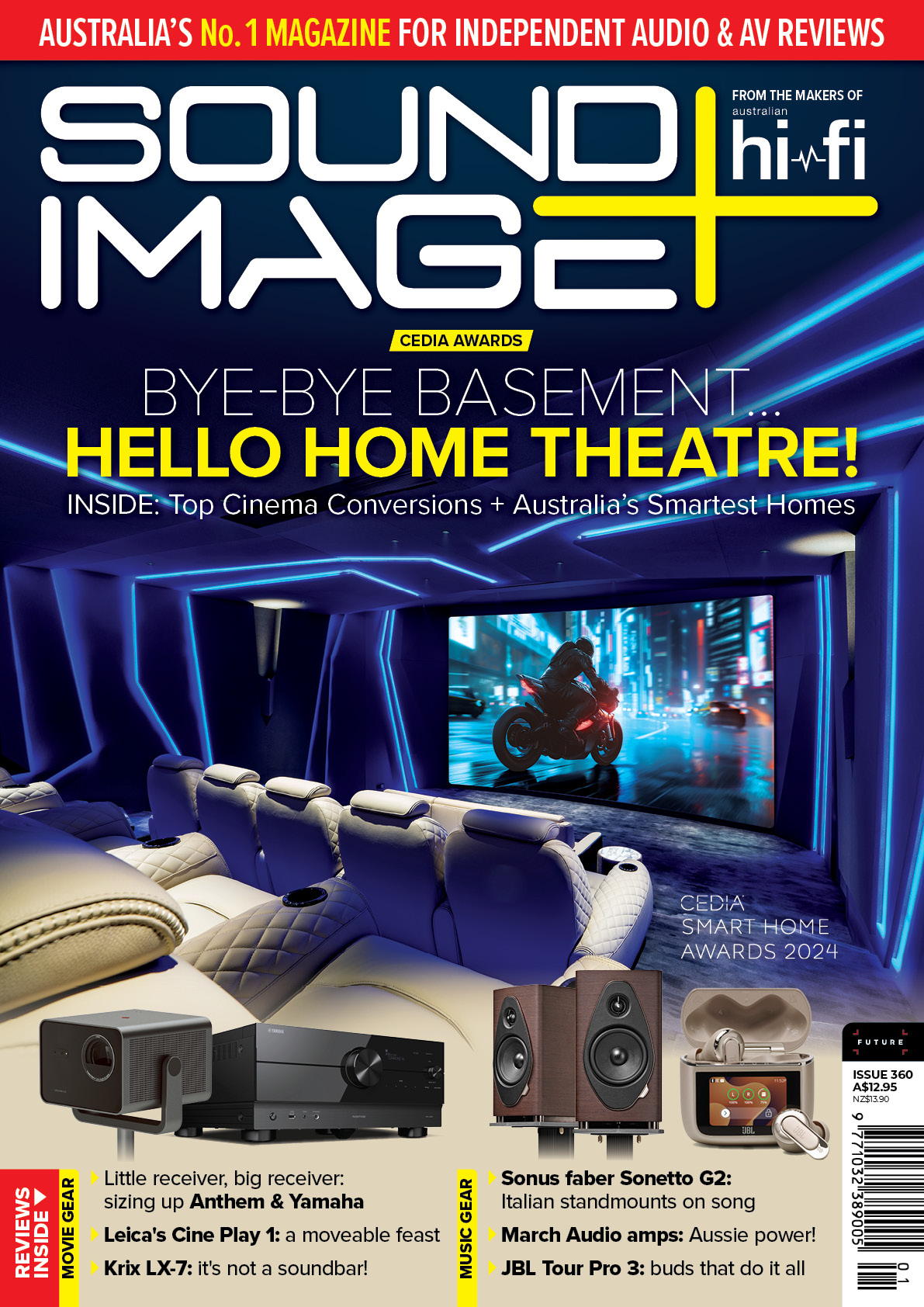Sound+Image Verdict
Pioneer's SX-S30 will deliver real hi-fi sound while accommodating modern living room with HDMI as well as audio inputs, plus streaming,
Pros
- +
Handles 4K HDMI, analogue and digital
- +
Fireconnect streaming and multiroom
- +
Bluetooth and AirPlay
- +
Turntable input
Cons
- -
No USB-B for computer
- -
Only one optical input
- -
High-res streaming issues
Why you can trust What Hi-Fi?

This review originally appeared in Sound+Image magazine, one of What Hi-Fi?’s Australian sister publications. Click here for more information on Sound+Image, including details on how you can subscribe.
Well, the definitions balloon is truly burst by Pioneer’s slimline SX-S30. It’s a two-channel amplifier, it has the networking smarts which defines this group of smart amplifiers, it has radio tuners (including DAB+), but also HDMI inputs and decoding for movie formats like Dolby TrueHD and DTS-HD Master Audio (delivering them in stereo), plus a set-up microphone for room EQ adjustment. So call this a smart stereo receiver?
However you label it, this is something many lounge rooms have been begging for — an amp that can properly handle both music and TV audio. Add the smarts — here courtesy of the rising ‘FireConnect powered by Blackfire’ platform, which includes Chromecast — and the promise is high indeed, especially given the price.
Equipment
The power rating first — no amount of versatility is of value if the output is weedy. Like Yamaha, Pioneer quotes its Class-D amp section with non-hi-fi specs — relatively high distortion of 1% THD is allowed, and further here the quoted 2 × 85W is the power delivered into four ohms rather than eight, measured at only 1kHz, with only one channel driven. So at hi-fi specs the watts would come out way lower. And there’s no way to upgrade it — there’s a mono subwoofer output but no ‘tape out’ or pre-out sockets here.

Perhaps that’s because all the space on the back is filled with the inputs. You get two line-level analogue inputs on RCA pairs, plus a turntable input (hoorah). The stereo digital inputs are a little light, with just one optical and one coaxial, plus a USB slot on the front for a stick or drive. Then there are four HDMI inputs and one output to your display, all of them 4K-compatible and HDCP2.2-enabled. Then there’s Bluetooth and, once networked by Wi-Fi or Ethernet, also AirPlay, Chromecast and FireConnect streaming — a huge array of wireless versatility which delivers network replay (including high-res PCM and DSD) and various streaming services, internet radio and so on (see the smarts panel).
There’s an FM tuner and a DAB+ digital radio tuner inside, and a headphone socket on the front. It lacks only USB-B for direct computer playback. Annoyingly the speaker binding posts have been filled to prevent the use of banana plugs, no doubt pandering unnecessarily to some Euro-legislation — so it was fiddly bare-wire speaker connections only, until our learned colleague at Australian Hi-Fi magazine inserted a wood-screw and yanked out the centre sections. Freedom!
Smart stuff
Both Onkyo and Pioneer (same company) now include the third-party FireConnect wireless multiroom platform on a wide range of product, along with Google’s Chromecast built-in, AirPlay and Bluetooth. Both FireConnect and Chromecast came to the S30 as a firmware update, so there’s nothing in the manual about activating them.
First make sure you’ve done a firmware update, then go to the ‘NET’ input and exit until you can see the screen on your TV (above right) which allows you to access music services old-style using the remote control and TV interface. Activating Chromecast required a few T&C acceptances, and then we were able to, say, stream YouTube audio from a tab on our Chromebook (not video, this is Chromecast audio only) or music from any of the many Chromecast-ready mobile apps.
Pioneer SX-S30 Select Fireconnect on the TV menu and you’re instructed to download the ‘Pioneer Connect’ app, which we did — it ‘found’ the S30 the moment it launched, and with no set-up at all laid out all the input selection menus at our fingertips, while an upper layer offered multiroom grouping (we added a Pioneer MRX-3 wireless speaker to the group). It’s a simple and well laid-out app, showing first physical inputs, then under ‘Net’ all the network music options, which include music on your device (PushPlayer, shown below right), TuneIn internet radio, Pandora, Spotify, Deezer and Tidal, plus selections for Bluetooth, AirPlay, Chromecast and FireConnect, though those last three will likely self-activate if you ‘push’ something via those methods. EQ options are also available within the app, and volume on a slider.
For networked music you select Music Server, which accesses UPnP shares, which worked OK up to CD quality files (see main review), though without any queueing or playlist system. So you’re left selecting tracks or albums as you go, a little inconvenient.
Will one FireConnect product talk nice with other brands on the platform? Nobody’s yet sure: Watch our Fireconnect primer at avhub.com.au/fireconnect for the latest.

Performance
Those HDMI inputs are usefully versatile — you can plug them up any which way then use the on-screen menu to allocate to the buttons on the remote, which are named ‘BD/DVD’, ‘Game’, etc. You can similarly reallocate digital and analogue inputs. Indeed on first connection an initial set-up begins automatically, including the Pioneer’s sound calibration software which uses a supplied microphone with the aim of compensating for any anomalies in your room (you can skip this procedure and do it later, as did we; see below). We did run a firmware update over the network, which took about 20 minutes to download and install.
Using a 4K TV we had no problems at all, but later with a 1080p TV one input did give us trouble, the Pioneer claiming it couldn’t show us the pictures from a Fetch TV Mighty because our TV didn’t support HDCP2.2. Eh? An odd result. Switching to a different input and back fixed this, but it did recur often.
Under an ‘AV adjust’ menu (and in system settings) there’s surprising versatility of the kind you’d normally find on a multichannel AV receiver. There’s not only the sound tuning but settable crossover and distance settings for each speaker, including a subwoofer if you’re using one. Volume adjustments and sync settings (audio delay only) can be applied to each input individually. And power management lets you choose if the unit goes into standby or not, and what exactly can wake it up.
We listened both with and without microphone calibration, which tuned out some room bass to tighten the sound, and could, if uncertainties about auto-correction crept in, be easily defeated by selecting ‘Pure Direct’ on the remote (toggling past a strange ‘AutoSurround’ offering, best avoided). The S30 proved an agile amplifier with surprising welly for its size, pushing out the bass pulses on the live LP version of Kate Bush’s Aerial Tal through a large pair of Scandinavian standmounters, only starting to ‘shout’ a little when at unusually loud playback levels. We ran test files from our NAS drive and it streamed MP3, AAC, WMA, FLAC, Apple Lossless, WAV and AIFF, though frequently stuttering over files higher than CD resolution, despite having an Ethernet network connection. Even from a USB stick we could play 192k PCM and DSD5.6 only with occasional misfires, clipping and even once a burst of noise from the left speaker. We note the HDMI inputs are specced for high-res audio where the digital audio inputs aren’t, and sure enough playing the same files from an Oppo via HDMI went flawlessly. So that’s an option.
Verdict
High-res audio and a network music queue aside, the Pioneer delivers on its extravagant promises extremely well, its HDMI connectivity giving it particularly strong TV audio gifts among this group, the app giving easy access to streaming services, and its compact size not doing it any harm either. A versatile little performer.
Sound+Image is Australia's no.1 mag for audio & AV – sister magazine to Australian Hi-Fi and to the UK's What Hi-Fi?, and bestower of the annual Sound+Image Awards, which since 1989 have recognised the year's best hi-fi and home cinema products and installations. While Sound+Image lives here online as part of our group, our true nature is best revealed in the print magazines and digital issues, which curate unique collections of content each issue under the Editorship of Jez Ford, in a celebration of the joys that real hi-fi and high-quality AV can bring. Enjoy essential reviews of the most exciting new gear, features on Australia's best home cinemas, advice on how to find your sound, and our full Buying Guide based on all our current and past award-winners, all wrapped up with the latest news and editorial ponderings. Click here for more information about Sound+Image, including links to buy individual digital editions and details on how best to subscribe.


